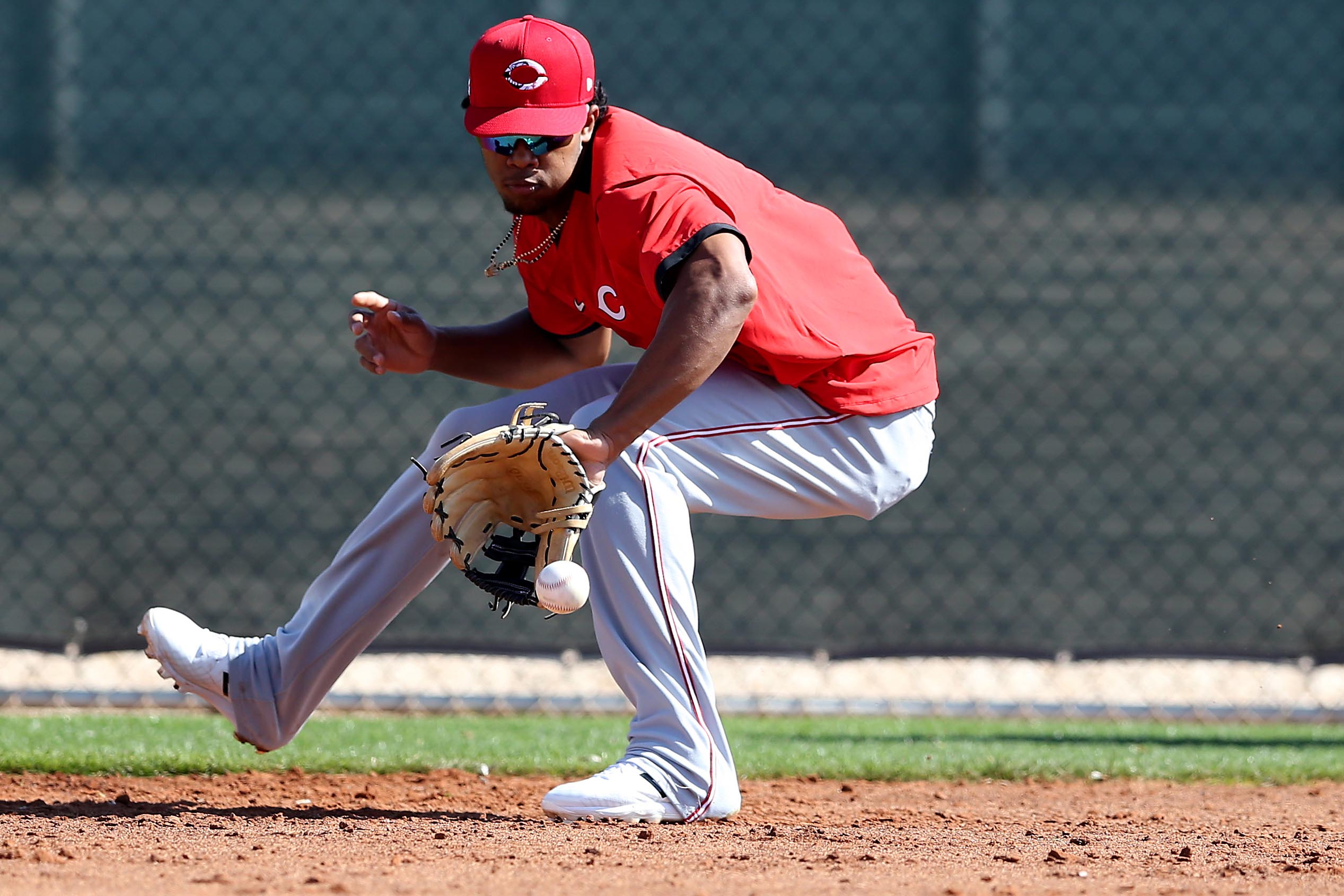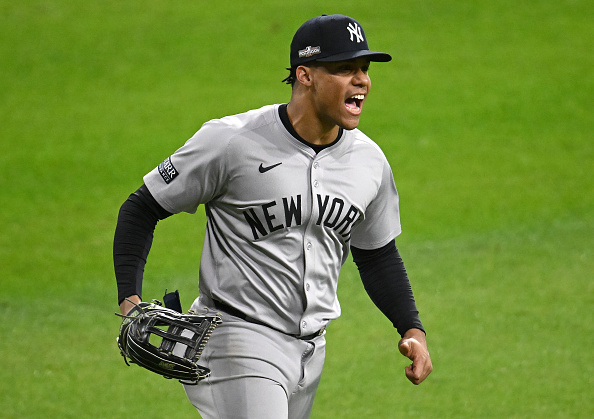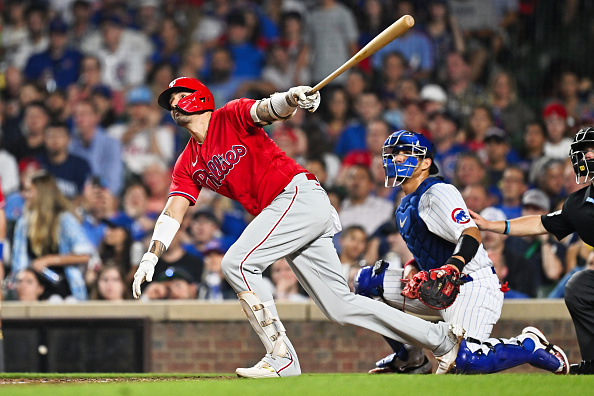Gone are the late days of February and here are the early days of March, and games that count are scheduled for the end of the month.
The Cincinnati Reds are nine games into their Spring Training schedule and sit with a record of 4-5. Records do not particularly mean much in the spring; the Miami Marlins had the fourth-best record in the Grapefruit League last year at 15-13 and the San Diego Padres finished second in the Cactus League with an 18-11 record before ending in the cellar of the National League West during the regular season.
Standout performances and opportunities are what do have meaning this early into the year. For the Cincinnati Reds, several young players have taken advantage of playing in front of major-league brass.
Shortstop is a particular position of weakness for Cincinnati. Freddy Galvis is expected to start there for the Reds come Opening Day. He hit .234 in 32 games for Cincinnati after being claimed off waivers from the Blue Jays. That batting average would have been higher than only two Reds players who played more than 100 games last season, Derek Dietrich’s .187 and Tucker Barnhart’s .231.
Galvis is entering his contract year and shortstop depth behind him is not strong. Kyle Farmer and Alex Blandino are the only two backups on the active roster. Digging deeper, Cincinnati does not have any young prospects on the cusp of cracking the big leagues.
However, one name has emerged in conversation after seven games this spring. Jose Garcia, the Reds’ No. 9 best prospect according to MLB Pipeline, is hitting .417 and reaching base at a .400 clip. Garcia’s three home runs lead the team, and no one else has more than one.
Garcia also has driven in six runs and made some plays with his glove. What is most notable is the fact that Garcia has yet to strike out over his 12 at-bats in seven games played.
Jose Garcia was signed out of Cuba in June 2017 for nearly $5 million. He was just 19-years old at the time and had not played against professional pitching, yet commanded first-round money.
Garcia was assigned to Low-A Dayton to begin his professional career in 2018, completely skipping rookie ball. He remained there for the entirety of the year, playing in 125 games and saw 482 at-bats. Garcia knocked 118 hits in Dayton and showcased speed, stealing 13 bases and legging out 22 doubles and 4 triples.
His drawback was his strikeout-walk ratio. Garcia struck out 112 times and walked just 19 times. He lessened that gap incredibly upon promotion to High-A Daytona the following season, seeing 25 walks against 83 strikeouts. Garcia also hit 37 doubles and saw his slugging and on-base percentage increase to .436 and .343 respectively.
While Garcia has yet to play a game at Double-A or higher, the promise he has shown this early in 2020 gives reason for the Reds front office to be hopeful. Garcia turns 22 in April and likely will begin in Double-A Chattanooga.
Catching has not been Cincinnati’s strongest area for offensive production. Behind the dish, however, Tucker Barnhart’s glove has been among the best in baseball. Barnhart’s .998 fielding percentage was fourth-best in MLB last season.
Scoring runs helps teams win ballgames. Barnhart’s 40 runs batted in last season were 25th in baseball and his 32 runs scored was 27th (among catchers). Barnhart was also worth just five defensive runs saved (DRS) last season, meaning the Reds should consider upgrading at that position.
Give rise to Tyler Stephenson, the eleventh overall pick in the 2015 draft. In six games this spring, Stephenson is hitting .400 with just one strikeout. His OBP is .500, best by any Red who has played in more than five Spring Training games. Stephenson has also shown an ability to get around the bases and score as he has touched home three times, tied for most on the team.
Stephenson was another player brought into the Reds organization at 19 years old. He was drafted out of high school and saw bulk time in Low-A Dayton in 2016 and 2017. Injuries were the main reason he stayed in the lower ranks, but Stephenson has since proven he can stick in a lineup.
Last year in Double-A, Stephenson scored 47 runs compared to driving in 44. His on-based was .372 and he hit 19 doubles. He was able to cut 98 strikeouts in 2018 down to 60 last year. His 6-foot-4 frame adds value behind the plate.
Stephenson will likely begin 2020 in Triple-A Louisville.
Cincinnati signed lefty Wade Miley to a two-year contract over the offseason to add a southpaw to a rotation featuring four right-handers.
The Reds made several moves to improve the bullpen as well, which may be considered the weakest area of the roster. Arms like Pedro Strop, Nate Jones, and Jose De Leon were brought in to be a part of the relief corps.
When it came time to add players to the 40-man roster, right-hander Tejay Antone was one who had his contract purchased. According to MLB Pipeline, Antone is the Reds No. 26 prospect and offers a solid fastball-slider combination.
In 27 games across Double-A and Triple-A in 2019, Antone struck out 133 batters and allowed 11 home runs in 146.1 innings. It is worth noting that Antone started all but one of those 27 games, and will likely have to transition to the bullpen to be a mainstay in Cincinnati.
So far through three pitching appearances this spring, Antone has yet to allow a hit and has struck out two in 3.1 innings. His 0.30 WHIP is second-lowest on the team, just behind right-hander Joel Kuhnel, who is also having an impressive start to his spring.
Cincinnati is still just nine games into Spring Training and only has one off-day remaining coming on March 11. The small sample sizes offer intrigue for the rest of the way, but it is worth wondering who else may come on the radar in the next few weeks.







